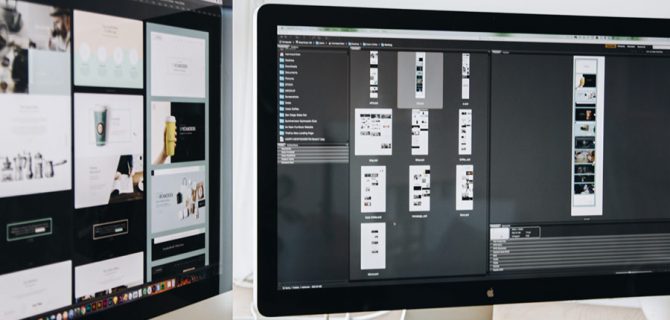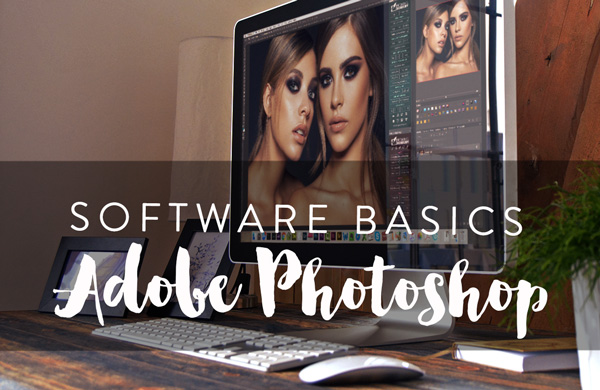Terms Of The Trade
Retouching Vocabulary & Terms

When speaking to an art director who might be interested in hiring you, it’s important to speak his or her language. Clear communication and understanding between you and your client instills trust, helps you deliver exactly what the client wants and gives your client the confidence that he hired the right talent.
If you’re a skilled amateur looking to land your first commercial job, check out this quick guide to some common industry terminology and conduct your client correspondence with confidence.
Read full article by Daniel Meadows From Brief to Sign-Off, Speaking ‘Industry’.
DIGITAL IMAGING
Digital Image Capture involves using a digital camera or scanner to capture light information in an image format file.
Pixel In digital imaging, a pixel is a physical point in a raster image, or the smallest addressable controllable element of a picture represented on the screen.
Image Processing, Retouching involves using software to manipulate pixels in an image file. The purpose of this step is to enhance the original picture, by adjusting brightness, contrast, color, sharpness, composition and other image attributes.
Image Output involves converting the pixels in the digital file back into a form that can be recognized as the picture originally taken.
Image Dimensions are the length and width of your image, measured in pixels. Some graphics programs will allow you to view and work with your image in the equivalent inches or centimeters.
Image Resolution is the actual digital image dimensions in pixels, measured by width and height. The higher the image resolution, the more detail the image will have, which also means a larger file size.
dpi vs. ppi – Dots per inch (dpi) is a measure of the dot density in an inch of a printed image. The higher the dpi, the more detail in the printed image. Pixel per inch (ppi) is a measurement used to define the resolution of devices such as monitors and scanners. A common misconception is that dpi and ppi affect on-screen image resolution, but they are completely unrelated to it.
RELEVANT: The On-Screen Image Resolution Myth Busted.
Upsampling is an image resizing technique (sometimes also referred to as up-resing) used in Photoshop and other applications that enlarges an image by increasing its size in pixels and automatically filling in the gaps through various interpolation algorithms such as bicubic interpolation and Lanczos resampling. Upsampling is used when a lower-resolution image will be printed larger than its actual size.
Banding is visually distinct stripes or bands in an image that typically occur in smooth gradients, particularly when rendered at low bit-depths (8-bit or lower). In other words, banding happens when you don’t have enough bit depth to create a smooth gradient.
Band-pass & band-stop often erroneously used as interchangeable terms, a band-pass filter is one that permits a specific range or band of frequencies to pass (the passband) while attenuating/rejecting all frequencies outside the band. A band-stop filter actually does the opposite: it rejects a specific range or band of frequencies (the stopband) while passing all other frequencies. For digital image retouching, the Inverted High Pass method to smoothing select frequencies is an application of a band-stop filter.
IMAGE PROPERTIES
Contrast is a measure of the difference in hue, saturation, or brightness values in an image and may involve any combination of the three. High contrast exists in areas that have strikingly different values. Low contrast exists when the differences in those values are minimal.
Highlights are the lightest parts of an image where the light illuminating a surface is being reflected. An image may contain specular highlights, diffuse highlights, or both. Specular highlights are mirror-like reflections of a bright source that appear on shiny objects. Diffuse highlights have softer edges and may still contain detail with the proper exposure. The nature of the highlights in an image can provide visual cues about an object’s shape and surface texture as well as the source of illumination.
Shadows are the dark areas of an image not directly illuminated by the main light source. Shadows in an image can provide visual cues about the shape and form of an object, proximity of one object to another, as well as the source of illumination.
Midtones are the range of tones that are in the middle between the highlights and the shadows of an image.
Luminosity, in conventional terms, is the same as the brightness, however, inside of Photoshop, luminosity is considered the ‘perceived brightness’ of a pixel – for example a blue colored pixel with 100% brightness has a much lower luminosity value than a yellow colored pixel also with 100% brightness.
Histogram is a graphical depiction of the tonal distribution in an image on a scale from 0 to 255, where ‘0′ represents pixels with 0% brightness and ‘255’ represents pixels with 100% brightness. In a grayscale image, all 0% brightness pixels would be black and all 100% brightness pixels would be white.
COLOR MANAGEMENT
Color Wheel – A visual representation of the relationships among primary, secondary, and tertiary colors in the form of a circle. The original color wheel was proposed by Sir Isaac Newton and related to the wavelengths of light, as opposed to hues.
Analogous Colors – The three to five hues positioned next to each other on a color wheel. The easiest way to observe analogous colors is by choosing a dominant color in a color wheel and selecting two or more colors on either side of it.
Complimentary Colors – Colors positioned opposite of each other on a color wheel. For example, red and cyan are complimentary colors and could be used to create strong color contrast in an image.
Triad Colors – Hues that are equally positioned from one another on a color wheel.
Primary Colors – Exist in two models: Additive and Subtractive. Red, Green, Blue (RGB) in the Additive Color Model for light-projected use as with monitors, camera sensors, and gelled strobes, and Cyan, Magenta, Yellow (CMY) in the Subtractive Color Model for dyes, paint pigment, and ink use. A historical variation of the Subtractive Color Model defines primary colors as Red, Yellow, Blue (RYB) and is mainly used in painting.
Secondary Colors – Created through mixing any two of the primary colors. For example, by combining Blue and Green we can create Cyan. There are Additive and Subtractive secondaries.
Tertiary Colors – Created through mixing primary and secondary hues in a given color space; adds analogous colors to the color wheel. An example can be Blue + Magenta = Violet in the RGB color wheel. Tertiary Color names in the RGB color wheel are different from those in the RYB color wheel.
Monochromatic colors – Different shades and tones of a single color that are created by darkening or lightening the color.
Color Space – Also referred to as a Color Model. Image editing programs such as Photoshop work with three basic color modes: RGB, CMYK and Lab. The RGB color mode has several “Working Spaces” optimized for working with RGB images such as sRGB, Adobe RGB or ProPhoto RGB.
Each of these working spaces has a different Color Gamut, or range of colors that is possible to achieve. For instance, ProPhoto RGB’s pure Red will be more saturated than sRGB’s pure Red.
Color Management – A systematic approach to managing color representation among a variety of digital devices such as digital cameras, monitors, printers, scanners, etc., the goal of which is to establish a consistent match in appearance across the devices.
Screen Calibrating (Calibration) – A process in which a calibration device is placed on the screen of a computer monitor to gather information about how the screen displays color in order to construct a profile to adjust the color response of the monitor to a known state. Most pro-level color calibration devices can also take into account ambient-light working conditions. Among the most popular calibration devices are X-Rite i1Display Pro and Datacolor Spyder5PRO.
RELEVANT: See The Hitchhiker’s Guide to Getting Accurate Color on Your Monitor for more information on Screen Calibration.
Chromatic aberration (CA) – A form of optical distortion caused by lens dispersion that results in color fringes along the boundaries between the light and dark areas in an image. It is most common in high-contrast images, for example, a building photographed against the sky. The colors may vary from green and blue to red, magenta, etc. CA occurs in two forms: axial and transverse. Axial CA is best corrected by using larger f-stops rather than any post-processing techniques after the fact. On the other hand, transverse CA can be fixed in post-processing software.
Color cast / color shift – Although sometimes intentional, a color cast is typically an unwanted tint or shift in color. For example, a photograph taken under fluorescent lighting can have a greenish cast if the white balance was set to Daylight. Simple color casts can be addressed in-camera while shooting by selecting the appropriate White Balance setting, or in post, ideally while processing the Raw files. One effective technique for neutralizing color casts in Photoshop is to identify the color cast and apply its complimentary color.
RELEVANT: See How to Remove Color Casts In Photoshop for a quick tutorial.
Color shifts can occur when converting from one color space or color mode to another. For example, global color shifts occur when converting from Adobe RGB to sRGB or from RGB to CMYK. Local color shifts can also occur as a result of dodging and burning, wherein dodged areas may appear less saturated than surrounding non-dodged areas and burned areas may appear more saturated than surrounding non-burned areas. Such shifts require color corrections, and a multitude of color correction techniques can be used, depending on the specific issue at hand.
Color corrections or CC – Color corrections are often necessary to fix issues such as uneven skin tones, color casts, and color shifts. Corrections can be made in a Raw Converter and in Adobe Photoshop using a variety of techniques, including channel-specific Curves/Levels, Hue/Saturation, Color Balance, Selective Color, and Gradient Map adjustment layers, as well as by painting on a blank layer set to Hue or Color blending modes.
Color grading or toning is the process of intentionally shifting the colors in an image to achieve a particular style or mood.
Blending Modes – Blending modes are used to blend the visual data of the top layer (blend layer) with that of the underlying layer (base layer); they can also be used to change a brush’s behavior.
Color blending mode – The Color blending mode combines the luminance of the color(s) in the base layer with the hue and saturation of the color(s) in the blend layer.
Hue blending mode – The Hue blending mode combines the luminance and saturation of the color(s) in the base layer with the hue of the color(s) in the blend layer.
Saturation blending mode – The Saturation blending mode combines the luminance and hue of the color(s) in the base layer with the saturation of the color(s) in the blend layer.
Read More Relevant Articles:
RETOUCHING TECHNIQUES
Texture Grafting is a technique that is used to replace unacceptable or missing texture with good texture from another area. When replacing skin texture, the source texture needs to be grafted from a similar area of the face or body from the same or even a different image. The technique can be accomplished by using the high frequency layer in a Frequency Separation setup, then the repaired areas can be blended in seamlessly using dodging and burning.
Dodge and Burn (D&B) – Dodging and Burning is a technique that originated in darkroom film days, and was used in printing to manipulate the luminosity of an image by brightening (Dodging) and darkening (Burning) select areas. A similar approach can be used to edit digital images using various implementations of this technique in Photoshop. On a macro (global) scale, D&B can affect visual interest, enhance overall contrast, and better define an object’s form or contour, adding volume and depth to a 2-dimentional image.
On a micro (local) scale, retouchers use D&B to correct detail-level issues like skin texture problems.
Macro D&B may also be referred to as “sculpting and contouring,” and micro D&B may be referred to as “pixel-level D&B.” See The Ultimate Guide to the Dodge & Burn Technique for more information regarding the different approaches to digital image D&B.
RELEVANT: Visit Master Dodge & Burn for an in-depth video course on the technique.
Contouring means creating depth and dimensions in images, using makeup and/or retouching techniques that highlight and shade specific areas of the face or body. Contouring can also be used to correct shapes and forms of facial features.
Frequency Separation (FS) for digital imaging is a technique that separates image data into distinct frequency ranges. Typically, image data is split into two frequencies – low and high – to facilitate the correction of micro texture issues on the high frequency layer without affecting the color and contour information contained on the low frequency layer. Care should be taken when using FS because, as with any technique, it can be overused or misused, leading to poor results. Used sparingly and in the right circumstances, FS can be a helpful tool in a photographer’s and retoucher’s toolkit. See The Ultimate Guide to the Frequency Separation Technique for more information.
Compositing A process by which artists combine separate visual elements to create a cohesive single image using a variety of masking techniques and blending modes. Effective composites implement consistent light and shadow, depth of field, perspective, and color to achieve believable results.
Masking is a simple but important non-destructive technique that enables retouchers to conceal or reveal different parts of an image layer, adjustment layer, or layer group in Photoshop. A black mask conceals, a white mask reveals. Masks can be created using a variety of painting and selection techniques.
Multiple independent masks can be applied to a single layer by creating a group that will contain the original layer and its mask, adding a mask to this new group, then repeating the process as many times as necessary.
RETOUCHING TERMS
Including excerpt from From Brief to Sign-Off, Speaking ‘Industry by Daniel Meadows.
Brief is your guideline provided by the client. The brief is any information relating to your role in the process, and may include instructions to follow a particular style (see references), and to remove, smooth or fix particular elements. The brief comprises of written or spoken instructions before you begin, and may be supplemented by mood boards and references.
Selects are the shots chosen by the client for retouching. There can be as few as two or three shots for an advertising campaign, or a few dozens for a lookbook or e-commerce usage from hundreds of shots taken during the shoot. Most shots from the shoot will remain largely unseen and unpublished, but you can ask for some of them if you think that one of the unselected shots could be beneficial for retouching the selects as an element of a composite, for example.
Mood Board is a collection of reference shots provided by the client as an aid to the photographer and/or retoucher. For a retoucher, PDF mood board is a guide for the level of retouching and color grading to have a better idea of the desired look for the finished images.
Mark-ups or Markups are retouching notes from the client often sent as JPEGs or PDFs in today’s digital age (although when working on-site you will often be given hand-annotated proofs). A markup is a version of a select with notes and marks indicating changes the client expects.
Turnaround is the time taken to deliver the final product. The client will expect you to ‘turn around’ the project before an agreed deadline.
Rounds are the number of revisions that the client can request from the retoucher per image free of charge. Typically this is agreed upon prior to the beginning of the project. The following rounds or additional requests should be billed for.
References are visual examples that capture the feel and style of retouching required by the client. The client will outline their requirements in the brief, but of course, ‘a picture is worth a thousand words’ and provided visual references are an ideal way to understand the client’s vision for the final product.
Drafts. Your first draft is the first delivery to the client of the retouched shots. These may be signed off, or marked up for revisions. After completing the amendments, you will deliver a second draft. When the client is satisfied, you have a final draft. (Congratulations! Write that invoice!)
Sign-off. When the client is satisfied with the retouched images, they are considered ‘signed off.’ The term suggests a signature from an Art/Marketing Director to indicate completion of the post-production and readiness of the images for further use.
Amendments/Revisions are small changes requested after delivery of a draft. ‘Smooth shirt a little, remove this stray hair and slightly less red in skin tones’ are considered amendments. A fully amended shot is considered a revision, and a round of revised shots is an updated draft. In a lot of cases, I have seen revisions, amendments and amends used interchangeably.
A Callout is a client’s note on a detail of the image that needs to be fixed.
Comp & Comping is short for “compilation”, composing multiple images.
SKIN RETOUCHING
Skin Tone is the set of color tones of a person’s skin. Retouchers usually aim for a relatively uniform skin tone, using a variety of techniques to eliminate major color inconsistencies.
Blotchy/Patchy Skin. Uneven skin tones are often the result of blood visible in patches beneath the top layers of the skin under strong studio lighting. It is normal and natural, but becomes quite noticeable and distracting when photographed in studio. In pre-production, the blotchiness can be minimized by professionally applied makeup, and then in post-production, skin tones can be evened out across the image using color-correction methods and retouching techniques that help even out luminosity inconsistencies, such as Dodging & Burning.
To Balance Skin usually means to even out skin color. The skin on a human face, especially with makeup applied, almost always has a different color than that of the hands and the rest of the body. Different skin colors can be brought closer together, or balanced, using color-correction methods.
Dirty Skin Color usually means that the skin tone is grayish, often can be “cleaned up” by removing Cyan from the Reds.
Skin Texture is defined by small-sized elements on the skin’s surface that are very high in contrast, such as skin pores. Skin texture has direction and might vary widely in its shape, size, and overall appearance.
Skin Blemishes are imperfections, pimples, or acne on a person’s skin that detract from the skin’s appearance. Blemishes are usually concealed with makeup or can be removed in Photoshop using simple retouching tools such as the Healing Brush or Clone Stamp tool and/or more advanced retouching techniques like dodging and burning.
Hot Spots are parts of the face and body that are closest to the light source can be overexposed and result in clipped highlights and lost details in the captured image. These hot spots can sometimes be fixed in post-production depending on the degree of clipping.
Airbrushing is a technique used in makeup application and analog retouching. It is done with an air brush that sprays paint on the image surface to conceal or alter the image. This technique was commonly used before digital retouching software became available. Both, makeup and digital airbrushing are not considered desired techniques for achieving high-end results in commercial and editorial beauty photography as they prevent from capturing and retaining human skin texture in images.
Nasolabial folds is a technical term for smile lines. Nasolabial folds are two skin folds on both sides of the nose running down to the corners of the mouth. These folds become more pronounced with age. In beauty photography, they are usually minimized with makeup or in post production to make the face look younger. However, as they are a part of the natural human appearance, they should not be removed completely.
Cupid’s Bow is the top edge of a person’s upper lip, which is shaped like a bow. In beauty photography, the bow is usually highlighted with makeup and dodging and burning to add shape and definition to the lips.
Vellus Hair commonly referred to as “peach fuzz.” It can be present over most of a person’s body, especially the face, forearms, and shoulders, where it becomes quite visible when photographed at a small aperture and illuminated with strong lighting. Significant post-production time and cost can be saved if the model preps her skin before the shoot by waxing the necessary areas of her face and body.
Gradient Map is an adjustment in Photoshop that remaps the grayscale range of an image using the color values of a selected gradient fill. The adjustment has multiple uses in retouching, including color-grading and correcting skin tones.
Clipped Highlights & Shadows are the highlights or shadows that lack any information and detail as a result of over- or underexposure of the image.
PRINTING & PROFILES
ICC, ICC profiles or International Color Consortium profiles enable you to obtain the correct color reproduction on a display monitor or in a print medium from a digital source like a camera or a scanner. These software-based profiles typically consist of tables of data that specify how a color should be produced and its relationship to other colors.
Embedded profile is the profile attached to a file that describes its color properties.
Assigning profiles means changing the color interpretation in your color-managed application and overwriting the interpretation delivered by embedded profiles. Color information within the file is not changed, only the interpretation of the existing data. It is possible to revert to the original color interpretation if you know what it was.
Converting profiles means converting color data going from one color space to another. Color values change depending on the rendering intents chosen.
Digital Printing is equivalent to inkjet printing, which means using newer technology to selectively apply pigment inks directly on the paper surface.
Analog Printing, similarly to creating film negatives, is done by illuminating chemical coated papers that are then further developed in chemical baths, rinsed and dried.
Finish (Paper). There is a wide variety of paper available to print on. The term “finish” describes a paper’s properties, such as structure/texture, thickness, white point, material. Common finishes include: matte, glossy, pearl, luster, satin, baryta, rag, and canvas among others.
Embossing is the process of using male and female etched dies and heat to raise or push letters or a design above the surface of a sheet of paper; it creates an eye-catching three-dimensional effect.
Coating (Paper). Print paper is coated with various compounds or polymers to produce different qualities in the paper. The coating can affect the smoothness, ink absorption, surface gloss, and weight.
Ink-Jet. An Ink-Jet is a component of a printer that takes its name from how it works. These printers spray ionized ink at sheets of paper that are guided by magnetized plates in the ink’s path to create the shapes it has been programmed to produce. There are two different technical processes used with inkjet printers. Bubble-Jet (thermal inkjet) is the process that uses thermal excitation of small ink droplets. Piezo printing is where a piezo electric process is used to transfer the ink to the paper.
Giclée is a French neologism used to describe inkjet printing without the connotations that the digital printing process had in the 80s. Often used in reference to the process of inkjet printing of fine art prints.
GSM, or Grams per Square Meter, is a unit in the printing world that signifies the weight of paper. The lower the GSM number, the lighter (thinner) the paper will be. For example, a printed flyer will be a lower GSM than a business card.
Watermark is a symbol or text that is added to a work of art, document, or even money that enables the viewer of the watermark to trace it back to the maker.
Sharpening (for printing) – output sharpening is applied to correct the lack of micro contrast inherent in some papers used for printing. It can also be done to correct for quality loss when a file’s pixel resolution does not match the printer’s native resolution.
Grain (paper) is the direction of fibers in a sheet or web of paper that is generated during paper formation. When paper is cut into sheets, it will be either long grain, if the fibers are aligned parallel to the sheet’s longer dimension, or short grain, if the fibers are aligned parallel to the sheet’s shorter dimension.





